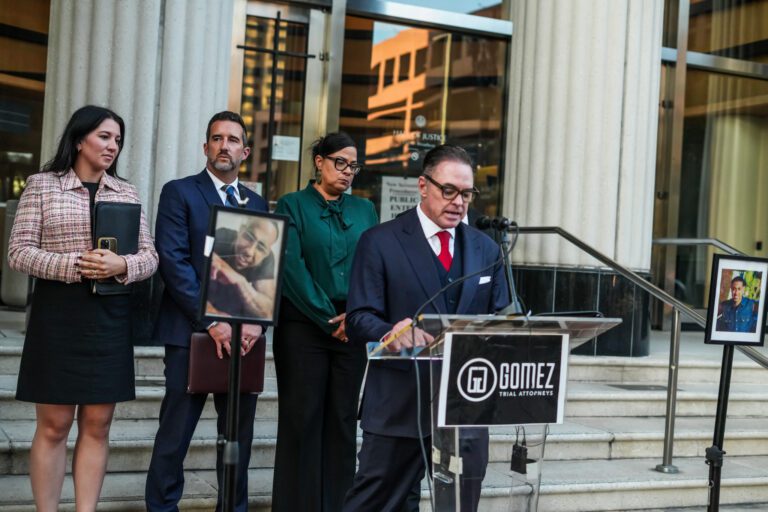Head injuries are a common cause of disability and account for 34 percent of all traumatic deaths. Each year, more than 2 million people visit the emergency room, and more than 72,000 die as a result of head injuries. Head trauma can happen in many ways and can be anything from a mild bump on the head to a serious brain injury. Similarly, the consequences can be temporary or life-changing. Head trauma is different than many other injuries because it can affect our physical, cognitive, behavioral, and emotional ability to function. If this is happening to you, a California brain injury lawyer might help.
What Is Head Trauma?
A head injury is any “trauma to the scalp, skull, or brain.” These injuries may be classified in different ways, depending on the nature and severity of the injury, and the area of the head that is affected.
The brain is an extremely complex organ. Therefore, each injury and its effects are distinctive. For example, the area called the frontal lobe, which is a frequent injury site, controls thinking and emotions.
Head injuries can be either closed or open. The skull is made of very hard, solid bone. It is designed to protect the brain, but a hard impact may fracture the skull. If you received a blow to the head, but the blow did not break the skull, it is considered a closed head injury.
However, if you were hit with an object that broke the skull and entered the brain, it is considered an open, or penetrating, head injury. These are more common in car accidents or gunshot wounds to the head. Head trauma may cause bleeding in the brain tissue and in the layers surrounding the brain.
Head injury may be classified according to the type of lesion involved. The term lesion refers to a region in an organ or tissue which has been damaged. In the case of head trauma, the two main types of lesion are primary and secondary.
Primary lesions result directly from the initial injury, such as a blow to the head or the brain hitting the inside of the skull. Secondary injuries are an indirect result of the injury, which usually occurs over time. Secondary lesions can be a complication that happens as a result of the primary lesion, or they may be unrelated to it.
Head injuries such as traumatic brain injuries, skull fractures, and scalp wounds are a common reason for a visit to the emergency room. A blow to one part of the brain can cause damage throughout. Some injuries, such as skull fractures, may exist independently or in conjunction with brain injuries.
Types of Head Injuries
Trauma to the head can cause several types of head and brain injuries, each with a range of severity.
A traumatic brain injury (TBI) happens when the brain is damaged, usually because of an accident. A person may have a TBI if an object hits their head, or if an object penetrates the brain through the skull. Traumatic brain injury (TBI) accounts for over 1 in 6 injury-related hospital admissions each year.
A concussion is a form of TBI. Symptoms of a concussion may cause lifelong complications regardless of the initial presentation of symptoms.
A skull fracture is a break in the bones of the skull. Typically, the fracture causes a bruise underneath the fracture, on the surface of the brain. In other cases, the skull is dented inward, and bone fragments press against the surface of the brain.
An epidural hematoma happens when one of the blood vessels under the skull is torn during an injury. As the blood vessel bleeds, blood gathers in the area between the skull and the outer membrane that covers the brain. This hematoma may expand within the skull and press on the brain, a life-threatening condition.
In an acute subdural hematoma, a blood vessel tears and the blood pools between the membrane that covers the brain and the surface of the brain itself. This sometimes happens when a force causes the head to move violently back and forth (whiplash). It happens quickly, often after head trauma from an assault, car accident, or fall. It is fatal in about 50 percent of cases. Chronic subdural hematoma usually develops gradually. It may begin forming several days or weeks after bleeding initially starts.
Intraparenchymal hemorrhages and contusions are a pooling of blood that occurs within the brain tissue. An impact on one side of the brain may cause the brain to bounce within the skull, resulting in damage at the site of impact and on the opposite side of the brain.
Symptoms of Head Trauma
Some symptoms may be delayed and appear hours to days after the head trauma. Symptoms vary greatly depending on the severity of the head injury, but may include:
- Nausea or vomiting
- Repeated or worsening headaches
- Lethargy or exhaustion
- Disorientation or confusion
- Loss of consciousness for a few minutes to hours
- Dilated pupils or clear fluid draining from the nose or ears
- Changes in vision or hearing
- Droopy eyelid or facial weakness
- Difficulty swallowing
- Body numbness or tingling
- Problems with dizziness or balance
- Frequent head or neck pain
- Cognitive problems
- Speech difficulties
- Changes in behavior or emotional responses
- Disturbed sleep patterns
- Convulsions or seizures
- Breathing problems
- Loss of bowel control or bladder control
- Paralysis
- Coma
Causes of Head Trauma
In the United States, the most common causes of head injuries are traffic accidents, accidents at home, work, during recreational activities, or while playing sports; physical or violent assault; and falls. Head injuries resulting from falls are a very common cause of hospitalization and death among people older than 65. According to the U.S. Centers for Disease Control (CDC), deaths from falls among persons aged 65 years and over increased dramatically from 2007 to 2016.
A study by the CDC indicates that 2,651,581 children 19 years or younger were treated for sports- and recreation-related injuries between in one decade.
Among all adults, men are three to four times more likely than women to sustain head injuries, although female athletes have 1.4 times higher overall concussion injury rates compared to males. Alcohol use is involved in about 50 percent of cases.
Blasts are the most common cause of TBIs for veterans in war zones.
How Are Head Injuries Diagnosed?
Head injuries are sometimes hard to identify. Such injuries are complex, due to the nature of the human skull and brain. Doctors may need to perform a comprehensive medical evaluation and diagnostic testing to understand the full extent of the problem.
Diagnostic tests may include:
- Blood tests
- X-ray. A diagnostic test that uses electromagnetic energy beams to produce images of internal organs, bones, and tissues.
- Computed tomography scan (also called a CT or CAT scan). This test produces images of any part of the body and is more detailed than regular X-rays.
- Electroencephalogram (EEG). This test records the electrical activity of the brain.
- Magnetic resonance imaging (MRI). This procedure uses a magnetic field and radio waves show the organs and tissues.
- Brain scan. If a head injury is moderate or severe, it may be necessary to do a brain scan, which shows how the brain and its tissues are working.
These tests don’t always reveal traumatic brain injuries—and a person may experience far worse symptoms than what these tests might predict.
The Glasgow coma scale is another diagnostic tool used to diagnose a concussion. Doctors examine the injured person and analyze his or her condition based on the victim’s ability to open their eyes, communicate, and execute a motor response, such as bending an arm.
First Aid for Concussion and Other Head Trauma
To prevent possible head trauma from worsening, first, call for help and then follow these tips:
- If there is an object lodged in the head, don’t try to remove it.
- Apply a sterile bandage if someone is bleeding, but do not clean or rinse the injury.
- Apply direct pressure to the wound unless there is a possible skull fracture.
- Never pick up a child or move any injured person unless absolutely necessary for their safety.
- Do not remove a helmet
Proving Fault and Liability
If you suffered a head injury because of someone else’s negligence or wrongdoing, you may be eligible for compensation. Negligent behavior usually consists of actions, but it may also consist of omissions if there is a duty to act with reasonable care. Therefore, you must prove that someone owed a duty of care, failed to act with reasonable care, and that the negligent act caused your injury.
About 5 million people in the United States are currently living with a head injury and need medical care or assistance with everyday activities. Depending on the area of the head or brain that is injured and the severity of the injury, victims may have problems with their physical functions, speech, vision, memory, behavior, and personality.
Even in cases where this injury does not lead to a fatality, the consequences can be painful and take a major toll on the survivor and his or her family. Many survivors cannot make a full recovery, so the financial costs of such a catastrophic injury continue to pile up. The cost of the medical needs and assistance of head trauma victims costs the United States over $56 billion each year.
A large percentage of those who suffer head injuries are children. Abusive head trauma is the leading cause of infant death from injury. The personal loss involved in such an injury is incalculable, and the financial costs are significantly higher for abusive head trauma compared to accidental head trauma.
Overall, approximately 300,000 of those who sustain a traumatic brain injury will require hospitalization and, of those who are hospitalized, about a third will face a lasting disability. Depending on the severity of the injury, lifetime care can range anywhere from $85,000 to $3 million or more. Much of the treatment and rehabilitation are concentrated in the first year after the injury.
Each situation is different, but average costs usually include:
- Rehabilitation costs in the first year average about $196,000. If the patient does not need rehabilitation services, the average costs of the patient’s first year of treatment could average out to about $18,000.
- Average costs after hospitalization, such as adaptive equipment, necessary home modifications, help with daily living, and vocational rehabilitation can average out to about $151,587.
- Even in cases where a patient only suffers a minor to moderate brain injury, average costs for hospital care, clinical testing, medication, and follow-up care could amount to about $15,000.
Financial costs associated with brain injuries include:
- Hospital bills, such as post-injury scans and surgery
- Fees for medical personnel, including specialists
- Medication costs
- Fees for psychological evaluations and therapy to assist with the behavioral and emotional changes associated with traumatic brain injuries
- Neurological rehabilitation
- Durable medical equipment costs, including braces or specialized wheelchairs
- Temporary absence from or a permanent inability to work
- Difficulty performing the standard duties necessary to work, forcing a survivor to either perform a different job for reduced wages, or work part-time
Lifelong Considerations for a Person With a Head Injury

Brain injuries affect everybody in a family. First, the family members deal with the trauma of hospitalization, then the adjustments when the injured person comes home and ultimately the stresses of managing the financial strains. Brain trauma can happen suddenly, and loved ones must adjust quickly to the changed circumstances.
Serious head injuries are catastrophic, and may require extensive medical and personal care. Recovery may be a long and expensive road. If you or a loved one suffered a head injury caused by the negligent actions of another, you should not have to choose between the cost of recovery and economic stability.
There are strict time limits, known as the statute of limitations, on filing lawsuits; it is important to act quickly if you think the negligence of another party caused you or a loved one’s injury. An experienced, compassionate, brain injury attorney can help you understand your options for recovery following a head trauma injury.







